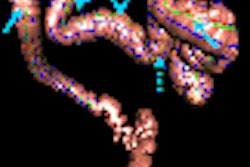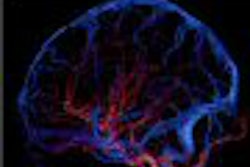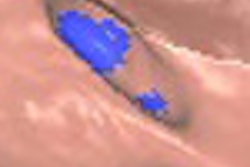Cardiac imaging providers, caught off guard by a U.S. proposal that would severely limit payments for coronary CT angiography (CTA), are racing against the clock to prevent its implementation.
On December 13, 2007, the Centers for Medicare and Medicaid Services (CMS) proposed a wholesale change in the way coronary CTA is reimbursed under Medicare. CMS' proposed National Coverage Decision (NCD) would eliminate all Medicare reimbursement for coronary CTA save for two indications, further stipulating that coronary CTA must be performed within the confines of a controlled clinical trial to be reimbursed.
Participating in an urgent drive for public comments that would prevent the rule from being adopted is Dr. Uma Valeti from the St. Paul Heart Clinic in Minnesota.
"No widely used imaging modality in the last five decades had to deal with an NCD that was so premature or so restrictive as to severely deny access to technology for Medicare beneficiaries," Valeti wrote in a statement. "CMS has not examined the full impact this proposal will have on the Medicare beneficiary. If the driver for this proposal is the fear of misuse of the technology, there is no credible published evidence to substantiate that from any third-party payors."
Valeti is urging the cardiac imaging community to contribute to CMS' public comments forum that will close after January 12. He wants CMS to suspend its proposed NCD for two years and consider more than 25 studies published in 2007 that were left out of the agency's assessment of coronary CTA.
Over the past few years, coronary CTA has proved to be fast and effective for ruling out coronary artery stenosis in mostly elderly patients with chest pain or other symptoms of coronary artery disease (CAD). It has gained popularity in recent years with the advent of 64-slice multidetector-row CT (MDCT) scanners that are considered the minimum necessary equipment for accurate scanning.
Local Medicare coverage decisions allowing reimbursement for a broad range of applications in all 50 states have also fueled demand for the test, which is now performed at more than 2,000 centers in the U.S.
Studies have shown that coronary CTA can rule out significant coronary artery disease less invasively than conventional angiography, with a negative predictive value of about 99%, and at a lower cost compared to other exams.
Drawbacks include a high radiation dose ranging from approximately 8 mSv to 15 mSv (although that issue is being addressed through new prospective gating techniques that lower the dose by as much as 85%). The need to inject iodinated contrast prior to scanning and difficulty in evaluating the smallest coronary artery segments have also been cited as drawbacks.
The proposed NCD would supersede local Medicare coverage decisions across the U.S., effectively halting coronary CTA reimbursement outside its limited criteria. Inasmuch as private payors generally follow CMS guidelines in crafting their own coverage policies, the NCD would likely lead to severe limitations on coronary CTA practice and research in the U.S.
"Supportive evidence for cardiac CT is accumulating at such a rapid pace ... that it is premature to jump to an NCD, especially when all 50 states have approved (local Medicare coverage decisions) in place," Valeti stated.
"I think it has the potential to very negatively impact patient care," said radiologist Dr. Joseph Schoepf, of the Medical University of South Carolina (MUSC) in Charleston, in an interview with AuntMinnie.com. "We've been part of a registry here in South Carolina that has demonstrated significant benefit and significant ... positive financial impact from CTA in terms of reducing nuclear imaging studies and reducing the number of normal coronary angiograms performed invasively."
As for research, cutting reimbursement now would "have a tremendous braking effect" on generating information about new ways the technology might benefit patient care, Schoepf said. "Recruiting patients into research will become extremely difficult."
Proposed limitations
The CMS proposal calls current evidence "inadequate to conclude that cardiac computed tomographic angiography is reasonable and necessary under section 1862(a)(1)(A) for the diagnosis of coronary artery disease."
CMS also called the current evidence "promising for two clinical indications and that coverage with evidence development (CED) would be appropriate for these indications under section 1862(a)(1)(E), based on the specific standards outlined below."
These indications include symptomatic patients with chronic stable angina at intermediate risk of CAD, or symptomatic patients with unstable angina at a low risk of short-term death and intermediate risk of CAD.
In fact, countered Schoepf, those two indications are among the less promising applications of coronary CTA because they indicate a high pretest probability of disease.
"Typical (coronary CTA) indications that we use are patients with atypical chest pain, pain that does not fall into those two categories; patients who have an equivocal or nondiagnostic other prior test such as a stress ECG on a treadmill or a nuclear study," he said. "Those are also exactly the indications that were previously acceptable to our Medicare carrier here and considered appropriate. That's also the indication outlined in the recently published appropriateness criteria for (coronary CTA)...."
The NCD proposal also recommends that an outcomes study be performed over five to 10 years to determine CTA's value and determine its future place in the imaging armamentarium. The so-called "coverage with evidence development" approach is characteristic of treatment modalities such as drugs, but is hardly applicable to diagnostic tests, in which the course of treatment and therefore patient outcomes are in the hands of the referring physician, say critics.
Among the few supporters of the CED approach in CMS' comments section is the America's Health Insurance Plans (AHIP), a Baltimore-based national trade organization representing private healthcare payors.
"AHIP believes that CMS should consider the potential application of coverage with evidence development to support high-priority studies that would add meaningful evidence to support informed use of this technology for the Medicare population," wrote AHIP lead analyst JoAnna Baldwin.
Cardiologist Dr. Peter Zwerner, an associate professor of medicine at MUSC and co-director of the MUSC Chest Pain Center, believes payors are needlessly concerned about excessive costs associated with coronary CTA.
"I think the fear that CTA will be an add-on rather than a replacement test is really not well-founded," Zwerner told AuntMinnie.com. "I don't think the current evidence suggests that's happening. And the appropriateness criteria that have been developed by the societies working together have, I think, helped direct how this test should be used and those are very carefully developed suggestions as to the test's utility."
The status quo
Cardiac imaging providers have enjoyed fairly wide latitude for the evaluation of the CTA technology via local coverage decisions adopted in 2005 in all 50 states. Publication the following year of joint guidelines on the use of coronary CTA (and cardiac MRI) served as a practice road map created by multiple stakeholders in the medical community.
Organizations participating in the 2006 guidelines included the American College of Cardiology (ACC), the American College of Radiology (ACR), the North American Society for Cardiac Imaging (NASCI), the Society for Cardiovascular Angiography and Interventions (SCAI), and others (Journal of the American College of Cardiology, October 2006, Vol. 48:7, pp. 1475-1497).
Rather than strictly ruling potential coronary CTA applications as acceptable or unacceptable, the JACC guidelines ranked them on a scale one to nine, with the upper range suggesting a generally acceptable approach, the middle range an uncertain clinical scenario, and the lower range a generally unacceptable use of CTA.
How did a decision seemingly at odds with current medical literature on coronary CTA become a national coverage decision proposal? In its proposed decision memo, CMS appears to have relied heavily on two reports by the Blue Cross and Blue Shield Association's Technology Evaluation Center (BCBS TEC), referenced several times in the document. The nonpeer-reviewed reports were produced in April 2006 on behalf of healthcare giant Blue Cross Blue Shield.
The BCBS reports noted "important gaps" in evidence regarding the diagnostic utility of coronary CTA, stating that most CTA studies to date were of limited value -- essentially "proof of concept" studies performed on subjects with a high pretest probability of coronary artery disease.
"Future work will need to evaluate these tests in larger, less selected populations representing the clinical settings in which they are actually expected to be used," the BCBS TEC reports stated.
Cardiac imaging providers contacted by AuntMinnie.com believe the guidelines relied too heavily on early studies and the payor-backed BCBS reports.
In an e-mail to AuntMinnie.com, Dr. Pamela Woodard, president of the NASCI, said evidence the CMS proposal ignored is more important than what it left in.
"The NCD proposal did not include at least 24 articles presenting 64-slice coronary CT angiography data," Woodard stated. "That being said, the societies (i.e., NASCI, ACR, ACC, and others) are willing to work together to do whatever it takes to convince CMS that coronary CT angiography both benefits specific patients by its use in lieu of invasive angiography and reduces overall costs when used in the correct patient populations."
At press time, medical societies involved in cardiovascular imaging were said to be preparing a joint statement urging the rejection of the proposed NCD. Typical of remarks already posted with CMS was a statement from Dr. Michael Poon, associate professor of cardiology at Mount Sinai School of Medicine in New York City and current president of the Society of Cardiovascular Computed Tomography (SCCT).
It is too early in the course of research to implement an NCD, which would seriously hamper data collection, Poon wrote.
"If CMS were to implement an NCD with limited clinical indications, the consequences would result in a substantial reduction in the amount of clinical data being collected at the local level to assess longitudinally the benefits of CTA services in specific patient populations, and would stifle local Medicare carrier efforts to collect data," Poon stated. "The opportunity to develop the data needed to understand the ability of the new CTA method to provide cost-effective diagnosis in a variety of clinical settings could be lost. It is untimely and potentially disruptive to the process of data gathering to implement a NCD now, while important clinical evidence is being and will be collected."
"I think it would be catastrophic if (the proposal) went though," said MUSC's Zwerner. "I can only hope that reason will prevail. It seems like a foolish way to balance the healthcare budget -- isolating a single new modality that has so much promise."
"This kind of ruling completely disregards expert opinion on the appropriate use of that test," Schoepf said. "And I think that CMS is letting a golden opportunity go by to actually decrease their costs that arise from inappropriate use of diagnostic cardiac catheterization."
CMS responds
One of the authors of the proposed NCD, Dr. Marcel Salive from CMS' research and analysis group, said that CMS tried to include relevant study data, and that it would consider public comments that are posted on its Web site during the comment period.
The forum "is open for public comments, and along those lines we will review and respond to those comments," Salive told AuntMinnie.com.
"We did try to do a thorough review of the literature," he said. At least four studies published in 2007 are included in the footnotes.
"Some of the things they referenced (in the comments) are not yet published. We do put more stock in things that are published," Salive said. As for the BCBS TEC reports, they were among the documents that were available when the recommendations were being written, he said.
References to the BCBS reports in the proposal are certainly no indication that the authors favored healthcare payors' interests over those of medical experts, he said. Moreover, "we strive for balance" in the makeup of the advisory panel, Salive said.
Finally, a year after stating it had no plans to institute an NCD for the CT procedure, how was it that CMS decided that now was the time for a national rule?
"We're always looking at the issues and deciding if they need (evaluation)," Salive said. "Our thought processes changed during that time period."
The public is invited to submit comments on the proposed NCD through January 12 at the CMS Web site.
By Eric Barnes
AuntMinnie.com staff writer
January 8, 2007
Related Reading
ACR issues 'anti-markup' recommendations, January 7, 2008
Bill introduced to add VC to Medicare screening coverage, December 20, 2007
CMS takes comment on imaging efficiency, November 20, 2007
CMS approves VC after failed colonoscopy in Midwest, August 30, 2005
Making dollars and sense out of Medicaid and FFDM reimbursement, December 20, 2007
Copyright © 2008 AuntMinnie.com



















